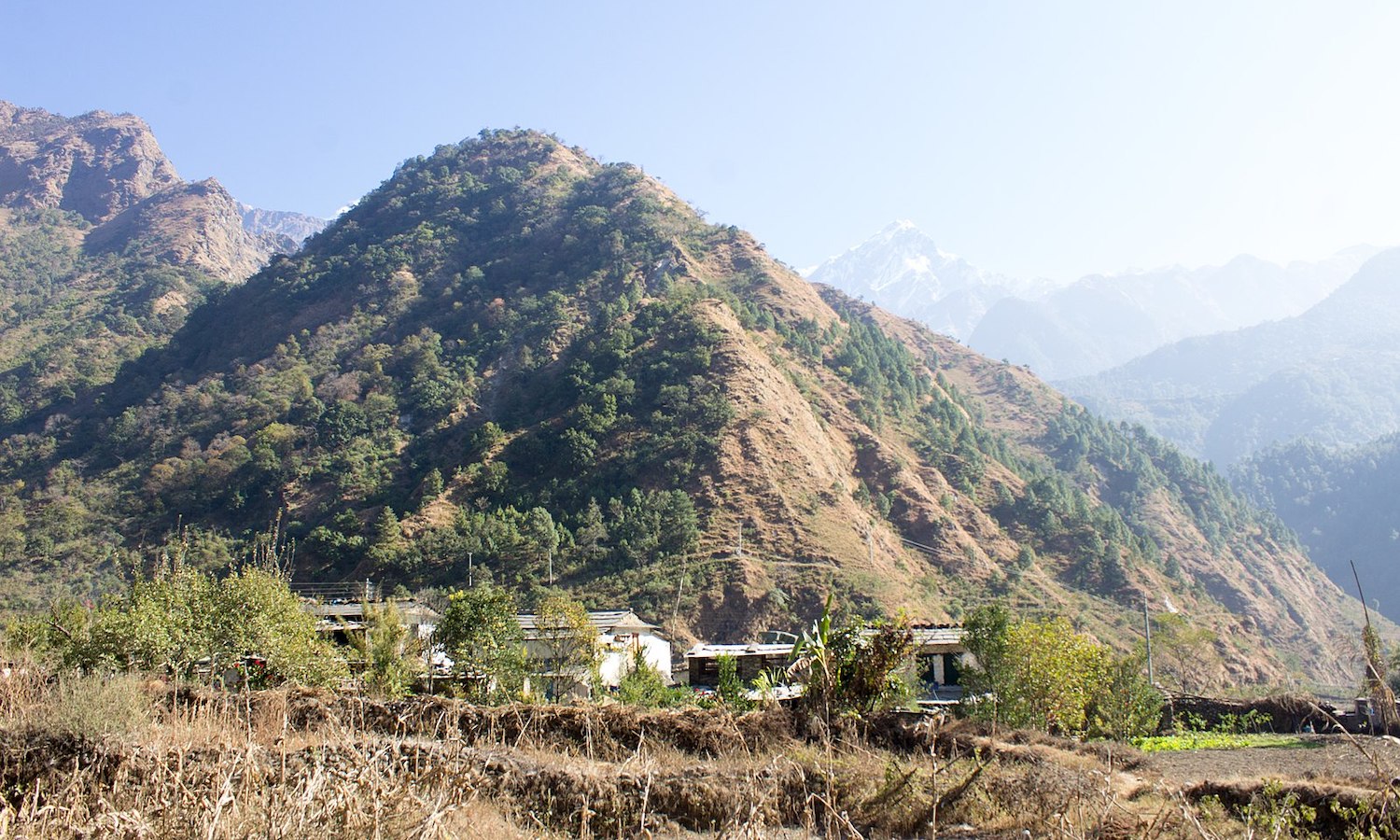When you think of Nepal, you might imagine people climbing Mount Everest, the world’s highest mountain above sea level. However, people aren’t the only ones scaling the vast and varied elevations of the Southeast Asian country—so are invasive weeds.
Recent research from the U.S. Agency for International Development (USAID)-funded Feed the Future Innovation Lab for Integrated Pest Management (IPM Innovation Lab) shows that invasive weeds have rapidly spread over time in Nepal. One of the major push factors of this spread is climate change. As Nepal’s temperature is projected to increase significantly in the next 50 years, invasive species are spreading more rapidly, which puts at risk crop production, livelihoods, biodiversity, and food security.
“The basis of our research includes looking at how invasive weeds spread along elevations under past and current climate scenarios,” said Pramod K. Jha, Professor Emeritus at Tribhuvan University in Nepal, which implements the project locally. “We use satellite images to capture these changes throughout the Chitwan Annapurna Landscape in central Nepal. Making observations about how our land changes over time is crucial for identifying vulnerable areas and developing strategies to address them.”
Jha noted that of the seven invasive weeds the project tracks, all but one has dramatically increased in spread over the last 30 years—and they will continue to spread if no mitigation efforts are made.
One of those weeds, for example, is Parthenium hysterophorus. Under future climate scenarios, its range is expected to expand significantly in all regions of the Chitwan Annapurna Landscape (CHAL). The weed, native to the New World, causes human health issues such as rashes and respiratory difficulty, taints livestock milk, and disrupts valuable farmland. With the weed’s habitat suitability projected to expand into protected areas including Langtang National Park, Annapurna Conservation Area, and Manaslu Conservation Area, valuable biodiversity is at stake.
Ageratina adenophora, also known as Crofton weed, is another invasive species the program studies. Crofton weed reduces crop yields, displaces native plants, and affects the carrying capacity of grazing lands. Under future climate scenarios, the program has predicted the weed will expand its elevational range and all regions except the Middle Mountain region are expected to gain suitable areas in which the weed will expand its reach.
Invasive species are capable of quickly adapting to climatic changes, hence their ability to push native species out. Muni Muniappan, Director of the IPM Innovation Lab, said that central Nepal’s ecological richness—unique biodiversity hotspots and topography, subtropical to alpine climates, elevations that range from 200-8091m above sea level—is both what makes it an ideal place to study climate change impacts as well as what puts it most at risk of climate change impacts.
“All of the invasive weeds this program studies are originally sub-tropical and tropical in nature,” Muniappan said, “so they initially invaded tropical zones of Nepal, such as the lowlands. Now, however, we are seeing them gradually spread to new habitats, like the mountains. This is especially detrimental because the mountains house some of the most resource-poor communities in Nepal. These communities heavily rely on natural resources, so these consequences of climate change will have a disproportionate impact.”
One of those threatened resources is finger millet, Nepal’s fourth most important crop. Considered a “poor man’s crop,” remote mountain communities of the country depend on finger millet because it can grow in rain-fed, subsistence farming conditions. Communities also rely on it as an important source of protein, fiber, calcium, and iron. The Virginia Tech-Tribhuvan University program measured that nearly 40 percent of area of Nepal is highly suitable for finger millet, but under future climatic conditions, where invasive weeds will be more widespread, the suitable area of finger millet would shrink by 4 to almost 9 percent in 2050 and nearly 9 to 10.5 percent by 2070. Because of the climate crisis and its resulting impacts, mountain communities that rely on this crop may be in even greater danger of food insecurity.
As climate change persists, developing countries stand to lose the most from its impacts, including the rampant spread of invasive species. Among 124 countries, Nepal has the third highest threat to agriculture sectors from invasive species spread. While the IPM Innovation Lab measures invasive species spread, it also aims to improve resiliency against them. One such approach is implementation of “IPM packages,” or suites of holistic techniques farmers can choose from to address crop threats. Application of biocontrol, for example, is one IPM package component that could safely and economically mitigate the spread of the invasive Parthenium weed.
“Sustainably addressing climate change and its impacts remains a top priority of the IPM Innovation Lab,” said Muniappan. “Through modeling invasive species spread, we gain early knowledge on their projected pathways, but this information also gives us valuable insight for designing the most productive measures for managing their spread. This is only the beginning – an important aspect of this work is garnering the interest of other institutes, organizations, and universities as well. Fighting climate change and its impacts requires a united effort.”
The Feed the Future Innovation Lab for Integrated Pest Management currently works in seven countries in Asia and Africa on a range of topics, including improving food security, increasing farmer income, gender equality in development, among others. Since its inception in 1993, it has been housed at Virginia Tech’s Center for International Research, Education, and Development.











